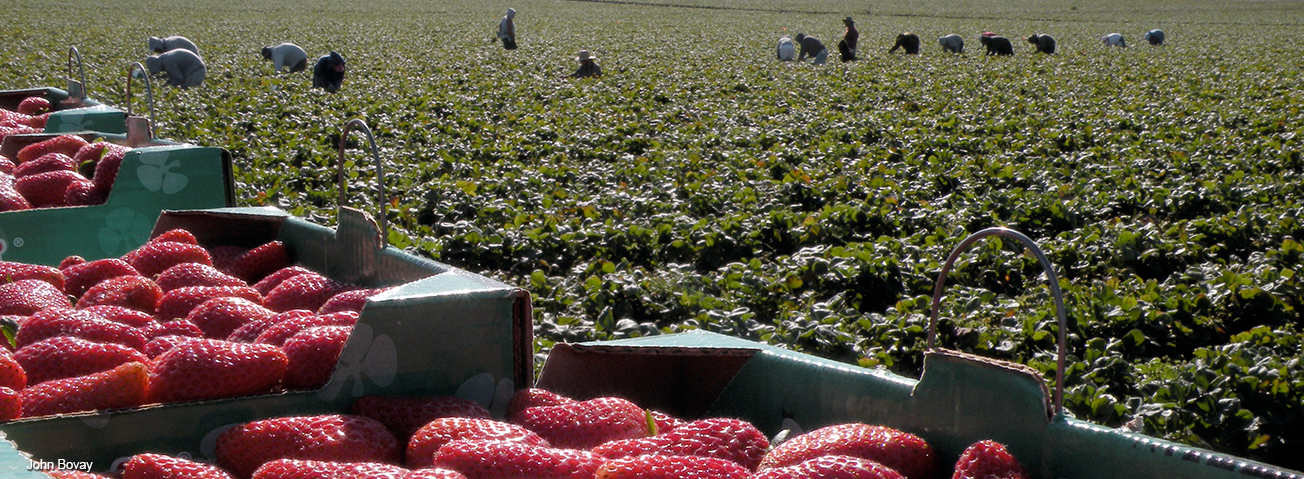
Food Safety Costs for Farms Vary Across Commodities Due to Differences in Farm Size
- by Peyton Ferrier
- 9/4/2018
The Food Safety Modernization Act of 2011 gave the U.S. Food and Drug Administration (FDA) new and comprehensive authority to issue rules for the improvement of food safety, including for fresh fruit and vegetables that are minimally processed and frequently consumed raw. In 2015, FDA finalized Produce Safety Rules that defined good agricultural practices that most farms will be required to implement over a phase-in period of several years.
While greater food safety is a widely recognized goal of both producers and consumers, the estimated farm-level compliance costs of the Produce Safety Rules are substantial, with costs of bookkeeping and water-testing being mostly fixed across farm sizes. In its regulatory impact analysis, the FDA estimated that upon full implementation of the rules, compliance costs as a percentage of sales would be 0.9 percent for large farms (annual sales over $500,000) and, respectively, 6.0 percent and 6.8 percent for small (annual sales between $250,000 and $500,000) and very small farms (annual sales between $25,000 and $250,000). To account for cost differences, the Produce Safety Rules give small and very small farms more time before implementation is mandatory and exempts farms that primarily sell locally from most requirements. The Rules also exempt farms growing fruits and vegetables that are either processed before sale with a pathogen-neutralizing treatment (e.g., heating before canning) or rarely consumed raw, such as asparagus and sweet corn.
For various reasons, the distribution of farm size varies across commodities and regions, a difference that causes the average compliance costs to differ across commodities. Leafy greens production, for instance, is dominated by large farms, while peaches and pears tend to be grown by many small operations. Using detailed data on the distribution of farm sizes from USDA’s National Agricultural Statistics Service, ERS researchers calculated the cost of compliance for the produce safety rules across commodities and regions. These calculations expanded upon the original FDA estimates of compliance costs for the rule’s regulatory impact assessment for farms differing only by size as measured by annual sales.
The ERS study found that among goods primarily produced domestically, lettuce, celery, broccoli, and cauliflower face lower compliance costs, representing less than 0.5 percent of total sales revenue, while snap beans and pears face compliance costs nearing 3.0 percent. While compliance costs can be larger still for certain tropical and primarily imported fruit (bananas, mangoes, and avocadoes), this likely reflects the very small scale of production on U.S. farms from which data for these calculations are collected.
| Vegetables | Estimated cost as share of revenue (percent) | Fruits | Estimated cost as share of revenue (percent) |
|---|---|---|---|
|
Artichokes
|
0.36
|
Apples |
2.18
|
|
Broccoli
|
0.44
|
Apricots |
2.02
|
|
Cabbage
|
1.59
|
Avocadoes |
3.53
|
|
Carrots
|
0.97
|
Bananas |
3.47
|
|
Celery
|
0.42
|
Cherries, sweet |
2.70
|
|
Cucumbers
|
2.12
|
Grapefruit |
1.72
|
|
Peppers (chile)
|
2.63
|
Peaches |
2.30
|
|
Snap beans
|
2.99
|
Pears |
2.97
|
|
Spinach
|
0.84
|
Plums |
2.30
|
|
Squash
|
2.50
|
Strawberries |
1.31
|
|
Tomatoes
|
1.07
|
Tangerines |
1.34
|
| Watermelons |
2.65
|
||
| Source: USDA, Economic Research Service. | |||
This article is drawn from:
- Bovay, J., Ferrier, P. & Zhen, C. (2018). Estimated Costs for Fruit and Vegetable Producers To Comply With the Food Safety Modernization Act's Produce Rule. U.S. Department of Agriculture, Economic Research Service. EIB-195.

